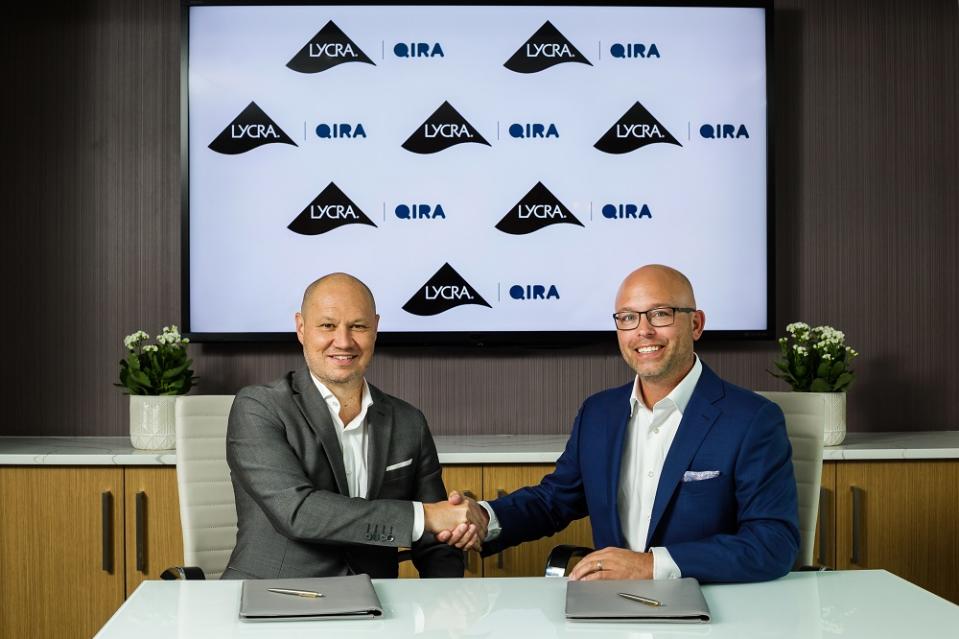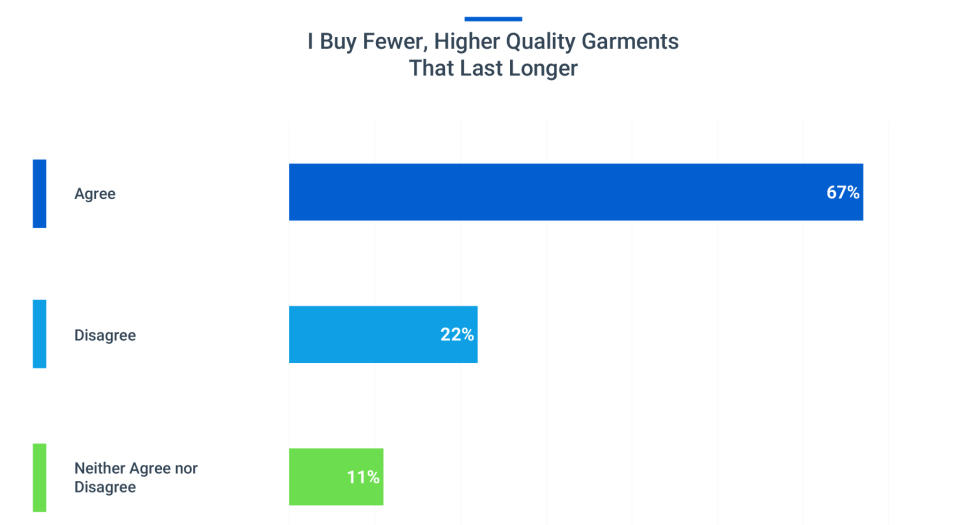Meeting the Challenges of Decarbonization

Click here to read the full article.
Decarbonization is one of the most significant and complex challenges facing our planet, and our industry.
Despite recent efforts by many companies, organizations, and individuals to adopt more sustainable practices, when it comes to emissions, we are unfortunately moving in the wrong direction.
The amount of carbon dioxide in the atmosphere has increased to a level not reached since more than 4 million years ago, according to the National Oceanic and Atmospheric Administration. In fact, last May the concentration of CO2 in the atmosphere logged in at 50 percent higher than the pre-industrial average.
To mitigate the worst effects of climate change, the Paris Agreement has set a goal of limiting the global temperature increase to 1.5°C above pre-industrial levels by 2030. For our industry to do its part, we must reduce GHG emissions by 45 to 50 percent by 2030, according to Textile Exchange.
So, why are we backsliding when, as an industry, we need to be moving forward? Yes, the challenge is extremely complex, and finding and implementing solutions to these challenges are difficult. But if there was ever a time when change was imperative, that time is now.
Back to reality
For context, let’s take a quick review of the current landscape. During the pandemic our industry experienced significant economic losses, and unprecedented supply chain disruptions. Those disruptions prompted over-buying and significant inventory build, which companies are just now beginning to clear.
Enter 2022 and the advent of the war in Ukraine, prompting fossil fuel prices to rise.
This has had two opposite effects. In the near term, some countries and businesses have had to revert to fuels such as coal to keep their businesses running. At the same time, investments in renewable energy increased significantly, which will help in the long run. In Europe alone, last year’s solar capacity installments increased 47 percent versus 2021.
The impact of these multiple crises—lagging or canceled orders, combined with higher energy and ingredient costs—has made it difficult for some companies to survive, let alone invest in sustainability at the levels they had planned.
However, it’s clear that financial restraint cannot lead us out of the climate dilemma. Transitioning to a more sustainable system requires adopting different models of production and consumption, along with a different mindset. And while these crises have made it difficult for many to invest at this time, those who do will likely be better for it in the long run.
The company I work for has for many years used fossil-based ingredients—and still does in some products—to make textile fibers. But we recognize the urgency of the climate crisis and our responsibility to do our part. It’s not happening overnight but progress is being made, even in this very challenging environment.
I would like to share some learnings to date from our sustainability journey, which I hope will be useful for others.
Think big
We need scalable solutions. Pilots, while useful for learning, will not get us where we need to be by 2030. Our company has partnered with a company called Qore to develop bio-derived Lycra fiber at scale. Qore is building a 65 Kton plant in the U.S. to produce a renewable ingredient that will ultimately make up 70 percent of Lycra fiber content. This will allow us to make and sell bio-based fibers at scale.

Understand your impact
Measurement is key to knowing if we are making progress. LCAs can help differentiate the impact between “preferred fibers” and virgin options. The Qore product is made from field or dent corn (not for human consumption), all grown in Iowa within a 100-mile radius of the Qore production site. In Iowa most of the corn is exclusively rain-fed and 95 percent of the farms run on wind power. All of this contributes to a significantly lower footprint, estimated to be up to 44 percent lower than virgin fiber.
Understand your Scope 3 emissions
One of the most important steps a company can take in understanding its impact is to define Scope 3 emissions. Since Scope 3 emissions account for the majority of most companies’ impact, tackling them is key to making real progress. Having that knowledge is essential to building a clear roadmap.
Work collaboratively with your suppliers to address Scope 3 emissions
It’s not unusual for companies to be reluctant to provide information about the details of their operations but communicating the “why” behind such requests can help in engaging them. Making your suppliers a key part of your journey and partnering with them to effect change can make a big difference.
Think outside the box
While our company has used fossil-based ingredients in our products for quite some time, increasingly we are engaging partners focused on renewable ingredients. In addition to developing renewables for our current offerings, we are also finding ways to support the development of new fibers that are outside our current stable of products. One example is our recent collaboration with HeiQ in which we are the exclusive distributor of HeiQ AeoniQ, a cellulosic yarn with the potential to be carbon negative.
Develop circular solutions
To have lasting impact reduction, we must transition from the linear “take-make-waste” model to a circular system. Scaling these systems will require significant infrastructure and technology developments, as well as a change in consumer behavior and mindset. Legislation such as California’s SB7076, the EU Green Deal and others will push the industry to change or be penalized.
Focus on value vs. volume
At both the consumer level and as an industry, we need to focus on value versus volume. In the circular economy, bigger does not necessarily mean better. Keeping garments in use as long as possible through re-use, repair and recycling likely means that suppliers to the apparel industry will make and sell less. Making higher value, low impact products that stand the test of time will be key.
Mindset shift
Finally, for the industry to meet our goals, we need consumers to buy into this same paradigm. The good news is, at the consumer level, we are starting to see a shift among some segments. In a study conducted by The Lycra Company in 2022 across five countries, 67 percent of respondents indicated they now “buy fewer higher quality garments that last longer” and 61 percent said they “try to limit the amount of new clothing they buy because they’re concerned about the impact on the environment.”

In summary, our industry has been through one of the most difficult periods in recent times. Some have responded to these challenges by putting decarbonization on the back burner while others are forging ahead, knowing that change is coming one way or the other. By having a well-defined baseline and roadmap, collaborating up and down the value chain to effect large-scale change, and working together to educate consumers, we are hopeful for the progress our industry can make to achieve our collective goals for decarbonization.
___________________________________________________________________
About the author

Jean Hegedus is currently the Sustainability Director for The LycraCompany. Hegedus has over 35 years of experience in the textile industry, working first with The DuPont Company, and then Invista, before moving to The Lycra Company in 2019. She began working in the denim segment in 2007, bringing several important innovations to market, including Lycra XFIT, Lycra dualFX, and Lycra EcoMade technologies. It was this work that heightened her awareness of the need for more sustainable solutions, and in July of 2019 she was appointed Sustainability Director for The Lycra Company.
About Transformers Foundation
Transformers Foundation is the unified voice representing the denim industry and its ideas for positive change. It was founded to provide a thus-far missing platform to the jeans and denim supply chain and a central point of contact for consumers, brands, NGOs, and media who want to learn more about ethics and sustainable innovation in the industry.
For further information, please contact Kim van der Weerd at kim@transformersfoundation.org or Ani Wells at communications@transformersfoundation.org

